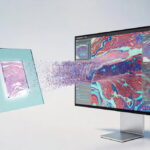Today, the world is moving towards digitization more rapidly than ever. The digital versions of tools and techniques have replaced the conventional ones. Digital maps have become very prevalent in recent years. The world is using them to know the distance and time needed to reach a certain destination from one point. Nowadays, maps are also accessible on phones with the help of the Internet.
On the other hand, access is very easy; the user never understands how they operate behind the scenes. With the growing prevalence of smartphones across the globe, the MRFR research documents predict that the global digital maps market is anticipated to bolster substantially during the assessment era from 2022 to 2030 at a healthy growth rate of approximately 16 %. The reports further state that the market will likely attain a size of around USD 4,679 Million by the end of 2030.
Digital Map: Definition
A digital map is a real-world digital image coupled with topography. The map is electronic, where you can see all the geographical characteristics, even the man-made characteristics such as roads, with the help of GUI. Moreover, these maps require a massive amount of data accumulated over the years. Then the collected data is converted into a virtual image using software.
The History
Before the rise of internet, paper maps were considered being only choice to find directions or get a look at the geographical features of a certain region. An easy landscape view was offered by these maps. The key concern with these maps is that they are real-time ones. Thus, one can’t see live traffic or roadblocks with these maps. Therefore, paper maps lack certain details about the region. Just like that, if one can get a map of a certain region but cannot zoom into it.
Apart from that, the user can’t upgrade physical maps unless they buy a new version of it. Meanwhile, digital maps keep upgrading using an update offered by the company servers or similarly by synchronization. With the growing prevalence of mobile computing across the globe in recent years, it has become much simpler to find a map of any region with the help of mobile phone along with the internet. So, basically everyone has the accessibility to the maps these days. The world has witnessed a fascinating journey of maps from physical to digital. The easy availability of digital maps is making people’s lives simpler. At present, digital maps operate in conjunction with GPS and the Internet. The user can find their exact location in real time, which is impossible in the case of physical maps.
Apart from that, the present day’s maps are more advanced. The user can discover places of interest right on their phones using maps. They can even find Famous landmarks, Hotels, ATMs, and nearly everything from the real world. These digital maps are also known to offer various views like hybrid view, virtual view, and satellite view. Advanced maps are known to be more user-friendly than physical ones. Likewise, the user can also make a 3D map using the software.
The data
Digital or electronic maps require a massive volume of data. It requires several systems like GIS and remote sensing. It also requires massive satellite descriptions. It is also clear that these maps need a massive number of images gathered by the satellite over the period along with the huge street-level data.
Moreover, the process is not done when the accretion is finished. Constant updating of the collected data is also very important, as the real world changes daily. So, it is very important to update the data regularly. Otherwise, the maps won’t make any sense. These maps should precisely display changing road conditions.
Conclusion
The future possible use cases for these digital maps are yet unknown but seem lucrative. Technology is believed to have limitless application areas and is likely to change the way of living in the future.
Read Also
- Automated Healthcare Software Solutions: How Intelligent Platforms Are Redefining Clinical, Administrative, and Operational ExcellenceThe healthcare industry is undergoing a seismic transformation. Rising patient volumes, value-based care models, staffing shortages, and complex regulatory demands have prompted organizations to look beyond traditional tools and embrace advanced software automation. As providers search for innovative partners capable of tailoring these sophisticated systems to real-world workflows, many turn to MCSI (Managed Care Systems,… Read more: Automated Healthcare Software Solutions: How Intelligent Platforms Are Redefining Clinical, Administrative, and Operational Excellence
- Why Whole Slide Imaging Shapes the Future of Digital PathologyWhole slide imaging has become one of the most important developments in modern pathology. It changes how tissue is examined, how cases are shared and how pathologists collaborate with the wider care team. More than a technological upgrade, it represents a shift in how laboratories think about their workflow, their storage needs and the tools… Read more: Why Whole Slide Imaging Shapes the Future of Digital Pathology
- Comparing 2025 Dental Practice Management Software OptionsSoftware Key Strengths Potential Limitations Best For Dentimax • Offers both cloud-based and on-premise/server deployment. • Tight integration between imaging (e.g. X-ray sensors) and practice management, charts, treatment planning, imaging all in one. • Transparent pricing and relatively simple UI/usability; solid for small to medium general practices. • May lack some of the… Read more: Comparing 2025 Dental Practice Management Software Options
- Top Innovations in Dermatology and Skincare TechnologiesHave you ever wondered how skincare keeps getting better year after year? From fighting acne to reducing wrinkles, today’s treatments seem more advanced than ever before. The tools and techniques used by dermatologists today are smarter, safer, and more effective than those we had just a few years ago. These breakthroughs don’t just help with… Read more: Top Innovations in Dermatology and Skincare Technologies
- Telehealth and Beyond: Building a Connected Continuum of CareHealthcare is on the verge of a radical transformation. Technology no longer simply supports medicine; it actively shapes how care is delivered and experienced. Achieving a seamless continuum demands more than deploying tools—it requires intentional design, coordinated teamwork, and innovative platforms that adapt to diverse clinical and patient needs. This article explores key strategies for… Read more: Telehealth and Beyond: Building a Connected Continuum of Care






